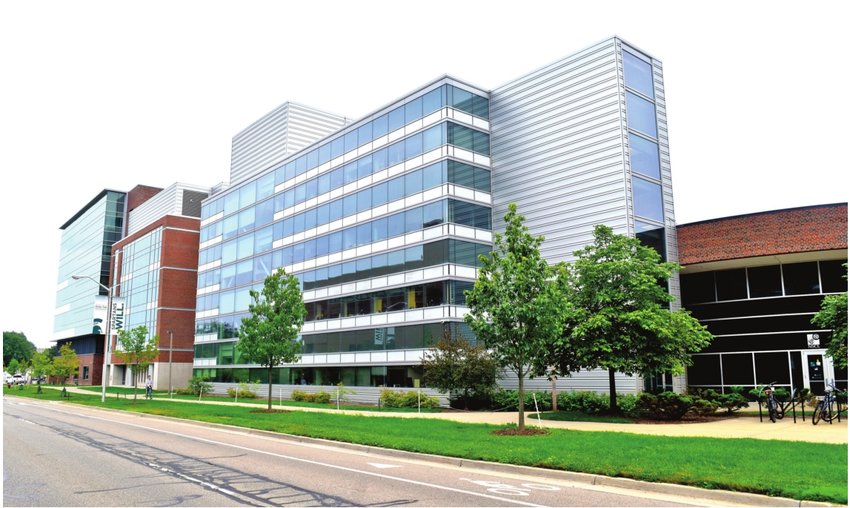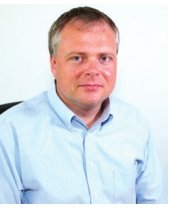
The long lines curving around Michigan State University’s campus Saturday were not for a football or basketball promotion. This time, students, alumni and East Lansing denizens flocked to see the Facility for Rare Isotope Beams, or FRIB.
Visitors got a glimpse of the inner workings of FRIB, guided through the facility by scientists.
There was a visible streak of awe across visitors’ faces as they turned the corner and were revealed FRIB’s superconducting linear accelerator. Each section seemed to have its own complex ecosystem of technology.
Progress for FRIB in 2018 is hot.
Scientists are now able to accelerate beams in three of the FRIB’s 46 superconducting cryomodules. It’s a big deal: Beam acceleration is an essential component of the research done at FRIB.
FRIB’s technology functions in four steps: First, ion sources boil a sample element, knock off electrons and push the ionized atoms around with electric and magnetic fields to create beams that are injected into the linear accelerator.
Second, the linear accelerator drives these charged particles down the track at increasing speeds, providing the highest intensity beams at half the speed of light.
Third, those beams strike a target.
When their nuclei collide, rare isotopes are produced.
Fourth, detectors measure the unique properties of rare isotopes, providing a greater understanding of rare isotopes as a whole.
But there’s still work on FRIB to be done. FRIB’s laboratory director, Thomas Glasmacher, said all 46 cryomodules must be functional for the facility to open by 2022.
“We need to finish building the accelerator. We have demonstrated all the pieces of the accelerator, and we made the first beam a couple of weeks ago — which we’re celebrating,” Glasmacher said. “Right now, the beam is 1 percent of the speed the scientists need. If were to count cryomodules, which make the beams speedup, we have commissioned three out of 46; we need to do 43 more.”
Glasmacher estimates FRIB can have 10 more cryomodules ready by 2018’s end.
What makes a “rare” isotope, rare?
While regular isotopes are abundant, rare isotopes are not commonly found in nature.
“A bunch of isotopes from most elements exist on Earth. A rare isotope is the kind of isotope that used to exist on Earth but has long since decayed,” Glasmacher explained. “We’re going to remake them.”
Glasmacher explained that rare isotopes were instrumental in the creation of the Earth’s heavy elements.
“The strange part is after the Big Bang, when Earth was hydrogen and helium, its elements should have stopped forming at iron. Yet you can dig for gold and you can find heavy elements,” Glasmacher said. “The reason for that is when the elements were made, the Earth wasn’t like it is now. It was in the rare isotope regime that the elements were formed; that’s the interesting part.”
Why is an understanding of rare isotopes valuable? There’s any number of discoveries within rare isotopes that scientists can translate into practical applications. Glasmacher suspects the first major use will be in the medical field.
“We want to make isotopes that help humans. Medical doctors say, ‘We need certain isotopes,’ and with effort we might able to make them in the future,” Glasmacher said. “After you have those, that’ll inspire scientists to think of something else. It’s this chain of discovery where one step leads to another.”
The $765 million project, which began construction in early spring 2014 and is funded by the U.S. Department of Energy Office of Science, State of Michigan and MSU, is expected to employ nearly 1,000 scientists from around the world at any given time, once it is completed in summer 2022. A study by MSU speculated the economic impact of the FRIB lands Michigan $4.4 billion — or as Carl Sagan would say, “billions and billions.”
“This is the first one that’s built on a university campus. Students who go to school at MSU can do their studies and they can work, or do research, at a worldclass facility same time. All other facilities like this are behind gates in a national lab,” Glasmacher said.
Support City Pulse - Donate Today!
Comments
No comments on this item Please log in to comment by clicking here